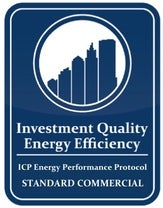By: Matt Golden, Senior Energy Finance Consultant, Environmental Defense Fund
 Nearly 40% of U.S. energy is consumed by both residential and commercial buildings, which emit more than a third of our country’s greenhouse gases. Realizing all of the available cost-effective energy efficiency savings would require roughly $279 billion of investment, resulting in more than $1 trillion in energy savings over ten years.
Nearly 40% of U.S. energy is consumed by both residential and commercial buildings, which emit more than a third of our country’s greenhouse gases. Realizing all of the available cost-effective energy efficiency savings would require roughly $279 billion of investment, resulting in more than $1 trillion in energy savings over ten years.
Environmental Defense Fund’s Investor Confidence Project (ICP) opens up energy efficiency to investment markets by laying the foundation necessary to enable organizations to tap into this vast potential. This means turning energy efficiency upgrades in the commercial building sector into an asset that can be bought and traded, much like stocks and bonds. By developing a straightforward set of protocols that define a clear road-map for upgrades, ICP creates an investment-quality asset class whose risks and returns are transparent. Ultimately, large-scale adoption of the ICP framework will reduce transaction costs and engineering overhead, while increasing the reliability and consistency of savings.
ICP will be hosting a series of webinars targeted at specific stakeholders in the energy efficiency sector, and strongly encourage individuals and organizations interested in the future of the energy efficiency industry to attend. With the assistance and feedback of industry leaders, investors and programs, ICP has developed a range of Energy Performance Protocols tailored to market needs and project types that will reduce transaction costs, manage performance risk and increase deal flow. Our webinar schedule this fall will focus on how these protocols can create value for individual projects, organizations and the energy efficiency industry as a whole.














